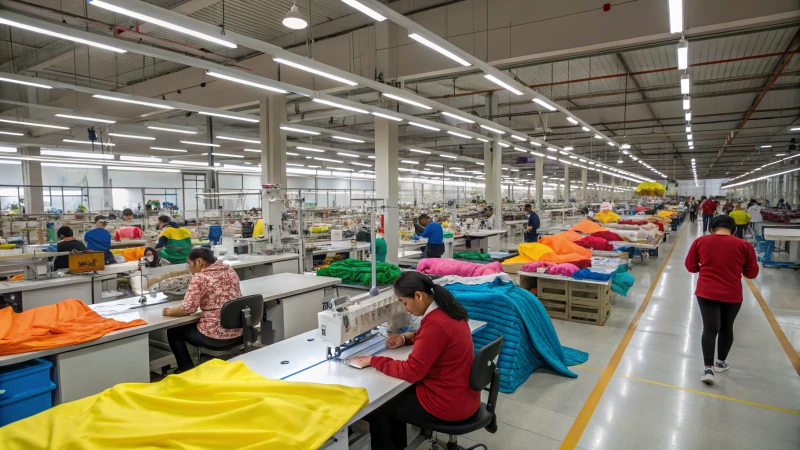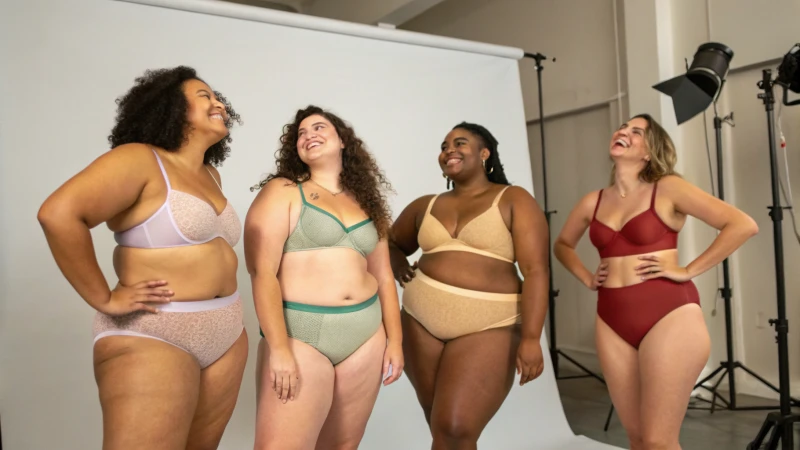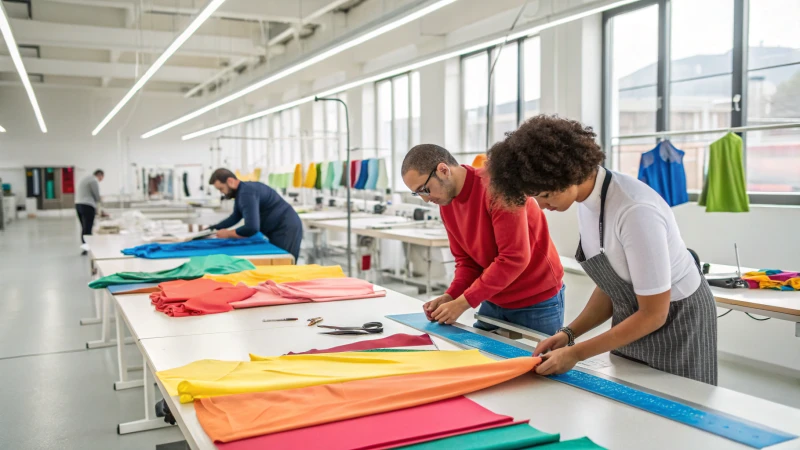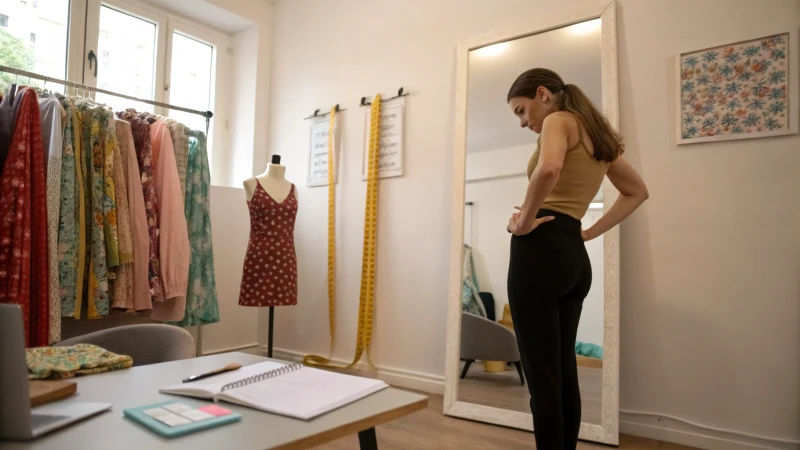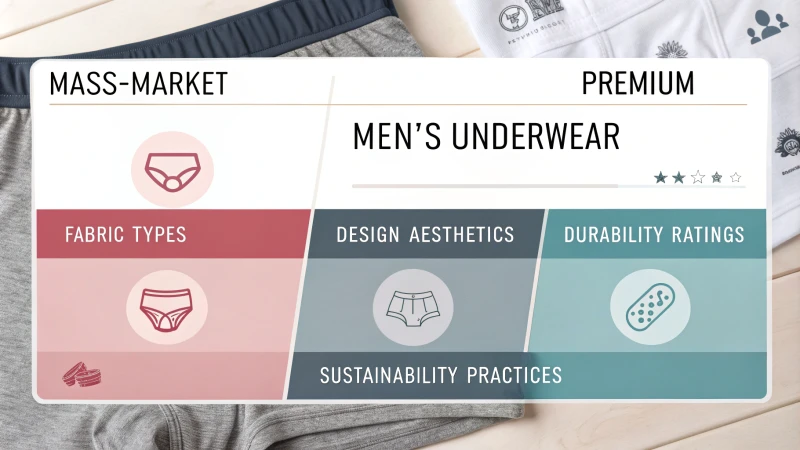
I moved through the confusing world of men's underwear. I had to choose between common and high-quality options. The choices seemed endless. However, knowing what truly differentiates them mattered a lot to me. It really did.
The main differences between mass-market and premium underwear involve materials, design, durability and sustainability. Mass-market underwear uses cheaper fabrics. These give basic comfort. Premium underwear uses luxurious materials. These focus on comfort and style.
The first time I shopped for underwear, I was attracted by the low price of mass-market brands. They were everywhere. I wondered how different they could be. But I experienced discomfort. Sometimes, they caused chafing. Other times, the fabric felt rough, like sandpaper. This taught me that not all underwear is equal. Premium underwear was like a discovery. The materials, like organic cotton and Tencel, felt luxurious. They embraced my body perfectly. Mass-market brands never fit like this. These premium pieces also promised durability. This really made me happy about my purchase.
Mass-market underwear uses cheaper fabrics than premium underwear.True
Mass-market options often prioritize cost over quality, leading to the use of less expensive materials compared to premium brands.
Premium underwear is always more durable than mass-market options.False
While premium underwear generally offers better durability, not all premium brands guarantee this, so it's not universally true.
What Makes Premium Underwear Worth the Investment?
Have you ever thought about why some underwear feels fantastic while others don't quite meet expectations? Different materials are used in everyday and high-end underwear. These materials really affect your comfort in surprising ways.
Mass-market underwear often uses inexpensive fabrics like polyester and cotton blends. These materials offer basic comfort. Premium options, however, use luxurious materials like organic cotton and Tencel. They offer really good durability and comfort. They also show a commitment to sustainability. Sustainability is very important.
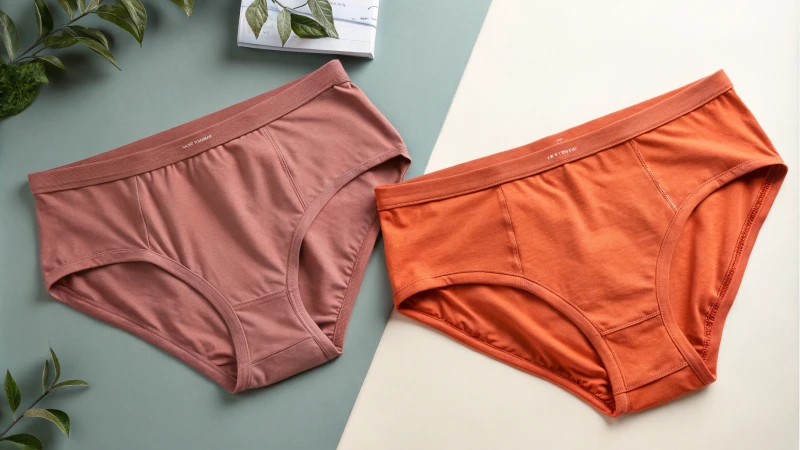
Understanding Material Choices in Underwear
When it comes to underwear, the material plays a crucial role in determining comfort, durability, and performance. Let’s delve deeper into the materials typically used in both mass-market and premium underwear.
Mass-Market Underwear Materials
Mass-market underwear often utilizes cheaper fabrics that prioritize cost over comfort. Here are some common materials:
| Material | Description | Pros | Cons |
|---|---|---|---|
| Polyester | Synthetic fiber known for moisture-wicking | Affordable, durable | Less breathable |
| Cotton Blend | Mixture of cotton and synthetic fibers | Comfortable, affordable | May lose shape over time |
| Nylon | Lightweight and stretchy | Quick-drying | Can be less breathable |
These materials are designed to provide basic comfort but often lack the luxurious feel and durability of premium options.
Premium Underwear Materials
On the other hand, premium underwear is crafted from high-quality materials that enhance the wearing experience. Common materials include:
| Material | Description | Pros | Cons |
|---|---|---|---|
| Organic Cotton | Grown without harmful chemicals | Soft, breathable | Typically more expensive |
| Tencel | Made from wood pulp, eco-friendly | Moisture-wicking, smooth | Requires specific care |
| Bamboo | Naturally antibacterial and sustainable | Soft, breathable | May be blended with synthetics |
These materials not only ensure superior comfort but also cater to consumers looking for sustainability and ethical production practices.
The Impact of Material on Comfort and Performance
The choice of material directly affects various aspects of underwear performance:
- Breathability: Materials like bamboo and organic cotton excel in allowing air circulation, reducing moisture build-up.
- Durability: Premium fabrics hold their shape better over time, while mass-market options may wear out faster.
- Fit: Tailored designs in premium underwear ensure a better fit, accommodating different body shapes more effectively.
Learning these material details has changed my shopping habits. Now, I feel confident choosing products that meet my comfort, style and sustainability needs. If you're interested in sustainable fabrics, explore eco-friendly materials1 for more information.
Conclusion
When choosing between mass-market and premium underwear, understanding the materials involved is essential. Whether you're seeking affordability or luxury, knowing what each material brings to the table will help you make an informed decision. For detailed comparisons on the best materials for your needs, consider researching underwear fabric types2. Your future self will really thank you!
Mass-market underwear uses cheaper materials than premium underwear.True
Mass-market options prioritize affordability, often using synthetic fabrics like polyester and cotton blends, which lack the quality of premium materials.
Premium underwear is made from organic cotton and Tencel.True
Premium underwear often features high-quality materials such as organic cotton and Tencel, enhancing comfort and sustainability compared to mass-market options.
How Does Design Impact Comfort and Fit?
Did you ever put on clothes or sit in a chair and feel right at home? This special moment happens when design and comfort join together. It feels more important than we often think. Let’s look at this interesting connection together.
Design affects comfort and fit. It uses ergonomic principles and selects high-quality materials. Designs suit specific body types. Feedback from users goes into the design process.
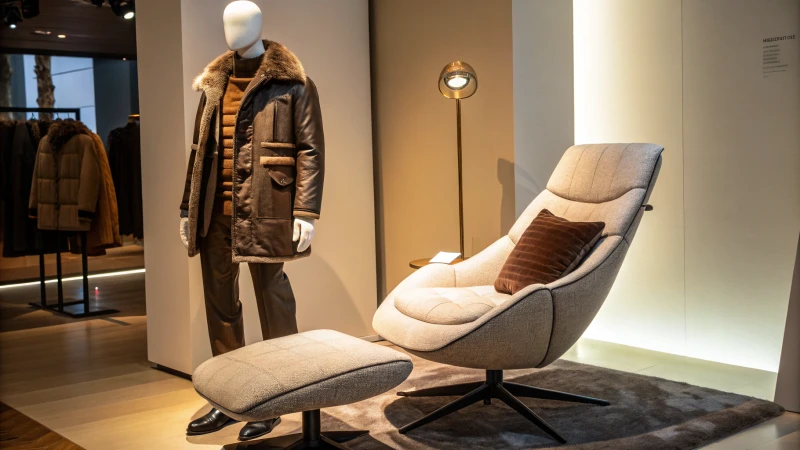
The Role of Ergonomics in Design
Design plays a big role in how comfortable we feel every day. I think of my own journey in finding products that feel good. It started with buying a pair of ergonomic shoes. They seemed expensive and bulky at first. But after wearing them, I noticed a big difference. It felt like they were made just for me. My arches were supported and I could walk for hours without pain. This experience showed me that good design is not only about looks; it's about how something feels when we use it.
The Importance of Ergonomics in Design
Ergonomics greatly affects comfort. It focuses on creating items that fit us well. I once sat in an ergonomic chair during a long meeting. At first, I wasn't looking forward to it. But the chair supported my back and helped my posture. I felt more awake and less tired. Ergonomic designs really increase comfort and help us feel better, both physically and mentally.
Materials Matter
Fabric really impacts how comfortable we feel. Premium brands know this. Switching to organic cotton underwear was amazing! It felt soft and luxurious against my skin.
| Material Type | Comfort Level | Durability | Sustainability |
|---|---|---|---|
| Mass-Market | Basic | Wears out fast | Less focus on eco |
| Premium | Superior | Long-lasting | Sustainable |
High-quality materials improve comfort, durability, and sustainability in our lives.
Tailored Designs and Custom Fit
Tailored designs make a big difference. I tried custom-fit underwear once; it felt like it was made specifically for me. The ergonomic cuts perfectly suited my body, offering a snug and comfortable fit.
Established brands need to focus on such thoughtful designs, hearing what customers think is essential for the right fit.
User Feedback and Iterative Design
User feedback matters a lot for designers. A simple survey can improve product design significantly. I joined a focus group for a new activewear line where I shared my thoughts on waistband thickness and leg openings; I was excited to see those changes in the final product! Designs should evolve based on real user input, which really boosts satisfaction.
Conclusion
Comfort and fit are crucial in product design, whether it's clothing or furniture; they matter greatly. Designers should use ergonomic ideas, choose quality materials, offer tailored designs, and value user feedback so that products connect deeply with users.
If you're curious to learn more, resources about ergonomic design principles3 offer great insights into creating solutions that may better our lives.
Ergonomic design enhances user comfort in furniture and clothing.True
Applying ergonomic principles improves comfort by supporting body types and reducing strain, particularly in long-use scenarios like sitting.
High-quality materials do not affect the durability of products.False
Contrary to this claim, premium materials enhance both comfort and durability, ensuring long-lasting product life.
How Long Does Mass-Market Underwear Last Compared to Premium Options?
Have you ever thought about how long your underwear truly lasts? The choice between regular and high-quality underwear shapes its lifespan. Regular underwear wears out faster. High-quality underwear lasts longer. This difference impacts your money and comfort. Let's look at how these choices affect you.
Mass-market underwear usually lasts 6 months to a year. Premium underwear often lasts over 2 years. Premium underwear offers better durability. Premium underwear also offers greater comfort. This investment probably becomes more valuable over time.
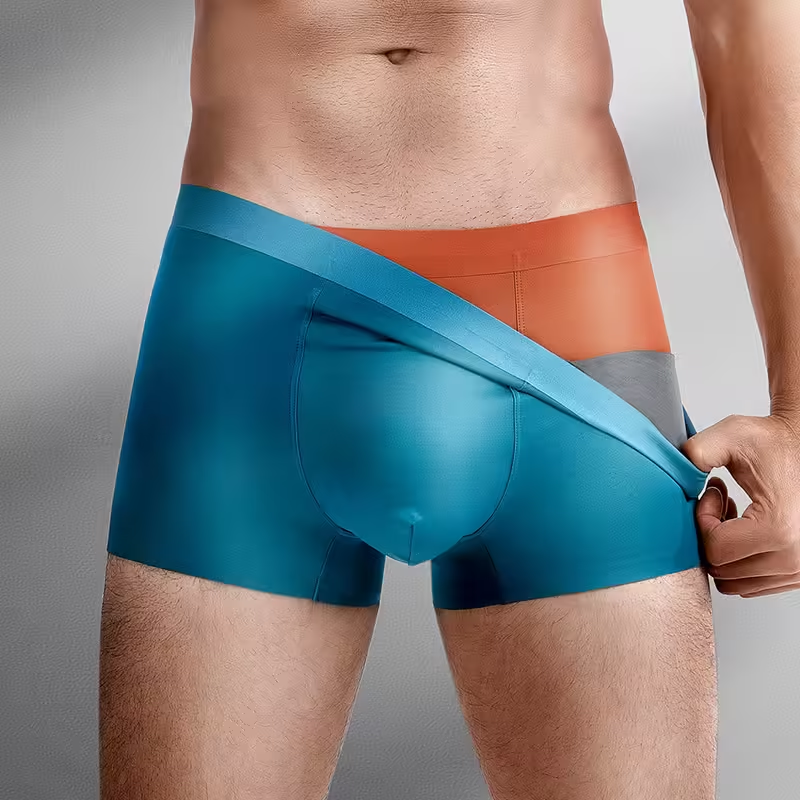
Understanding Longevity in Underwear Materials
The longevity of underwear is heavily influenced by the materials used in their production.
Mass-Market Underwear typically employs cheaper fabrics such as polyester or basic cotton blends. These materials offer basic comfort but often wear out faster due to their lower durability.
On the other hand, Premium Underwear is made from luxurious materials like organic cotton, modal, or Tencel. These fabrics not only provide superior comfort but also resist wear and tear, maintaining their shape and softness over time.
- Mass-Market Materials: Polyester, cotton blends
- Premium Materials: Organic cotton, modal, Tencel
For a detailed comparison of materials used in underwear, check out this resource underwear fabric types4.
Design and Construction Quality
The design and construction quality of underwear also play a significant role in their longevity.
| Feature | Mass-Market Underwear | Premium Underwear |
|---|---|---|
| Fit | Standardized | Tailored designs |
| Seams | Basic stitching | Reinforced seams |
| Elasticity | Moderate | High elasticity |
| Style | Limited options | Diverse styles |
Mass-market options often lack attention to fit and ergonomic design, leading to discomfort and quicker degradation. Premium underwear, however, focuses on tailored fits that adapt to body movements, enhancing durability and comfort.
For more insights into the impact of design on longevity, visit importance of fit5.
Durability and Care Recommendations
When it comes to durability, premium underwear outperforms mass-market options significantly. Here are some care recommendations that can extend the life of both types:
- Washing: Always follow washing instructions. Premium underwear may require gentler cycles or hand washing.
- Drying: Avoid tumble drying; air drying is preferable.
- Storage: Store in a cool, dry place to avoid fabric degradation.
These practices can greatly enhance the lifespan of both mass-market and premium underwear.
To explore more about proper care for your underwear, check out underwear care tips6.
Cost-Effectiveness Over Time
While mass-market underwear may seem more cost-effective initially, investing in premium underwear can lead to savings in the long run due to their extended lifespan.
Here’s a breakdown of potential cost comparisons:
| Type | Average Cost per Pair | Expected Lifespan | Cost per Year (Assuming 3 Replacements) |
|---|---|---|---|
| Mass-Market | $10 | 6 months | $60 |
| Premium | $30 | 2 years | $45 |
This illustrates that while the upfront cost for premium underwear is higher, the total cost over time may be lower due to their longevity.
For further financial analysis on underwear purchases, visit underwear investment analysis7.
Mass-market underwear lasts longer than premium underwear.False
This claim is false; premium underwear generally lasts longer due to superior materials and construction.
Premium underwear uses more durable fabrics than mass-market options.True
This claim is true; premium underwear is made from luxurious, durable materials like organic cotton and modal.
How Do Sustainability Practices Differ Between the Two Types?
Have you ever thought about why some underwear brands care more about the planet than others? Mass-market and premium underwear brands show their values through their sustainability practices. These choices reveal a meaningful story. Some brands clearly prioritize the environment.
The sustainability practices in mass-market and premium underwear show big differences. Mass-market brands prioritize affordable prices. They often ignore eco-friendly options. Premium brands, in contrast, concentrate on luxurious materials. They choose ethical production methods. These brands attract eco-conscious buyers. They care about both quality and sustainability. Quality and sustainability really matter to these consumers.
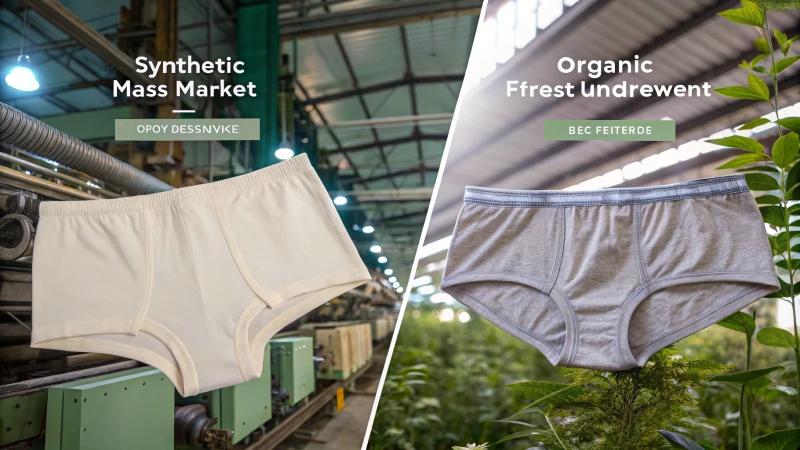
Understanding Sustainability Practices
Sustainability practices can vary significantly between mass-market and premium underwear brands, reflecting their values, target audiences, and production methods.
Mass-Market Brands often prioritize cost-effectiveness over sustainability. They typically use cheaper fabrics that may not be eco-friendly, such as polyester or synthetic blends. These materials are produced quickly and in large quantities, which can lead to a higher environmental impact. For instance, the production process may involve harmful chemicals and significant water usage.
On the other hand, Premium Brands focus on using luxurious and sustainable materials like organic cotton and Tencel. These materials not only provide better comfort but also contribute to less environmental degradation. Premium brands often emphasize ethical production practices, ensuring fair labor conditions and lower carbon footprints.
Key Differences in Material Sourcing
| Aspect | Mass-Market Underwear | Premium Underwear |
|---|---|---|
| Materials | Cheap fabrics (e.g., polyester) | Luxurious, sustainable materials |
| Environmental Impact | High due to mass production | Lower due to sustainable practices |
| Comfort | Basic comfort | Superior comfort |
This table illustrates the stark contrasts in sourcing materials, which plays a crucial role in each type's sustainability approach.
Production Methods
The production processes also vary widely. Mass-market brands tend to have high-volume, fast-paced manufacturing lines that prioritize speed over environmental considerations. As a result, waste management practices may be lacking, leading to significant textile waste during production.
In contrast, premium brands often adopt more environmentally friendly production methods. They may utilize sustainable practices8 such as:
- Closed-loop systems that recycle water used during production.
- Waste reduction techniques, ensuring minimal off-cuts and scraps.
- Local sourcing to reduce transportation emissions.
Marketing and Consumer Awareness
Another critical aspect is how sustainability is marketed. Mass-market brands might not highlight their sustainability practices, focusing instead on affordability and accessibility. In contrast, premium brands leverage their commitment to sustainability as a selling point, appealing to eco-conscious consumers willing to invest in quality products that align with their values.
Understanding these differences can help consumers make informed choices about their purchases and support brands that align with their sustainability goals.
For further reading on how sustainability practices impact consumer choices, check out this insightful article9 that explores consumer behavior trends in sustainable fashion.
By comparing these two types of underwear brands, it's clear that the approach to sustainability not only affects the environment but also influences consumer perceptions and brand loyalty.
Mass-market underwear brands use eco-friendly materials.False
This claim is false. Mass-market brands typically use cheaper, less eco-friendly fabrics like polyester.
Premium underwear brands prioritize ethical production practices.True
This claim is true. Premium brands focus on sustainable materials and ethical labor conditions, reducing their environmental impact.
Conclusion
Discover the differences between mass-market and premium underwear in terms of materials, design, durability, and sustainability to make informed purchasing decisions.
Explore how different materials affect comfort and performance in underwear, helping you make better purchasing decisions. ↩
Learn about eco-friendly fabrics that could enhance your underwear selection while being kind to the planet. ↩
Discover how ergonomic design enhances user comfort and fit across various products, leading to improved well-being. ↩
Discover how long different types of underwear last to make informed purchasing decisions. ↩
Learn about fabric types used in underwear for better durability and comfort. ↩
Find out how to care for your underwear to extend its lifespan effectively. ↩
Analyze cost-effectiveness when investing in premium underwear compared to mass-market options. ↩
Clicking this link will provide a deeper understanding of sustainability practices across different industries, enriching your knowledge base. ↩
This link will help you explore consumer behavior related to sustainability in fashion, offering insights that can enhance your understanding. ↩



